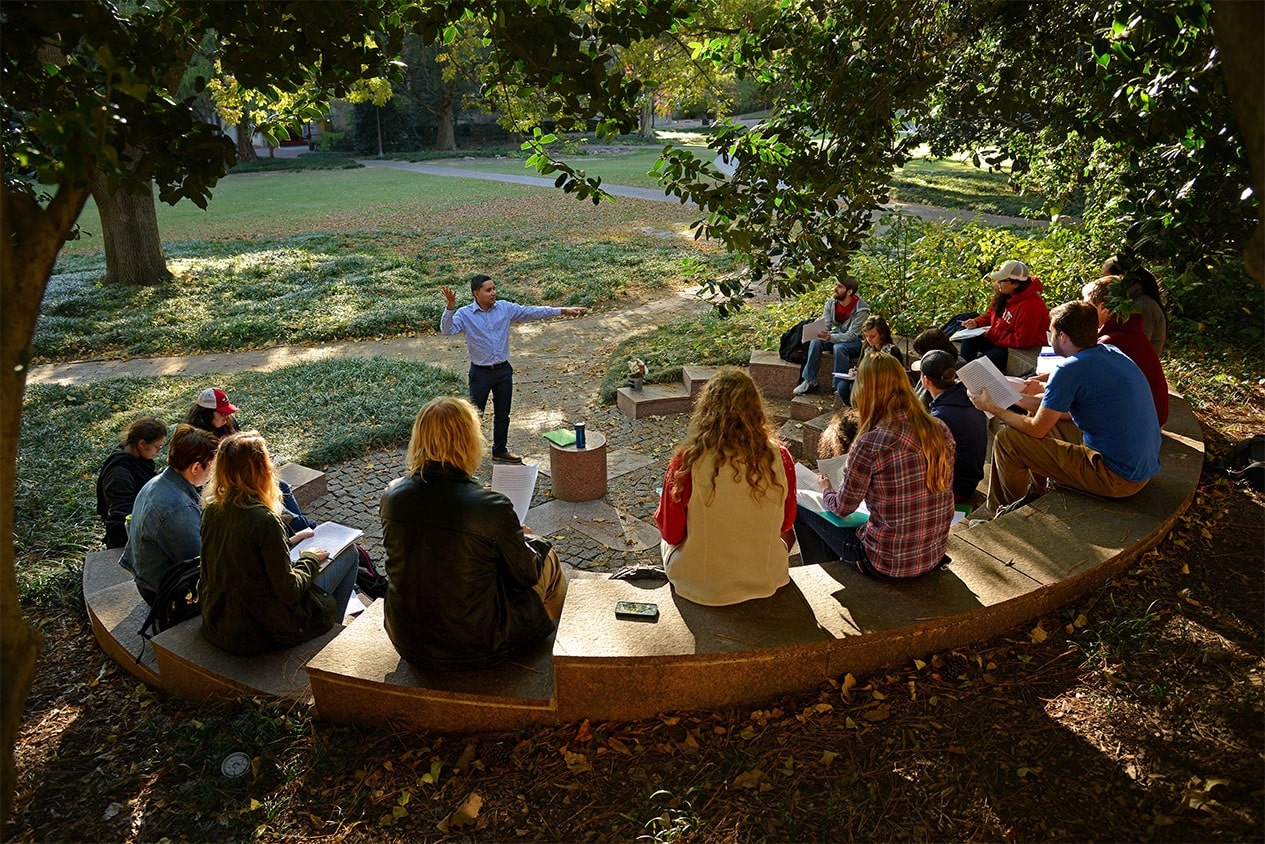In this article Sanem Soyarslan, associate professor of philosophy, discusses some of her current work on Spinoza’s account of the philosophical life.
I study the history of early modern philosophy, with a particular emphasis on Spinoza. Currently I am working on an article on Spinoza’s account of the life of reason of a philosopher. I begin with a question: Which of the following seventeenth century paintings captures Spinoza’s understanding of the life of reason better: Rembrandt’s famous The Philosopher in Meditation or Willem van der Vliet’s lesser-known Philosopher and Pupils, in which the philosopher is seen interacting with his pupils?
Matthew Kisner, who chose the latter image as the jacket cover of his book Spinoza On Human Freedom, has a clear answer to this question. He states that, in representing the philosopher as social and active, “Van der Vliet’s painting comes far closer to capturing Spinoza’s understanding of the life of reason and freedom” than the former, more familiar representation of the philosopher as “solitary and contemplative.”
In a recent article Hasana Sharp presents us with a similar view, suggesting that Spinozistic free life is “an active, engaged, and social life that brings people together as friends and citizens” rather than a solitary vita contemplativa.
Unlike Kisner and Sharp, scholars such as Steven Smith and Yirmiyahu Yovel interpret Spinoza as prescribing a solitary life of contemplation; they suggest a connection between rationality and solitude and, thereby, a natural link between intellectual perfection and withdrawal from the social.
While I agree with certain aspects of Kisner and Sharp’s criticism of the solitary contemplative model, I am skeptical as to whether their social activist model represents an entirely accurate representation of Spinoza’s philosopher and the life of reason and freedom the philosopher embodies. In my article, I will unpack two reasons for skepticism regarding this position.
First, even though Spinoza clearly values friendship in the Ethics, he has a rather pessimistic view of ordinary people. Accordingly, a careful reading of his masterwork show that he is very much cognizant of the risks and limits of friendship between the philosopher and ordinary people.
The second reason concerns Spinoza’s account of blessedness (beatitudo), which Spinoza describes as a state of perfection that arises from intuitive knowledge (scientia intuitiva), that is, cognition of the relation of God’s essence to the essences of things. As I will argue in my article, this state of perfection could lead to a form of solitude by bringing about a new insight, which transcends an identification with humanity.
In the concluding section I will turn to a recent distinction between two kinds of solitude that was made by psychologists James Averill and Louise Sundararajan on the basis of the subjective quality of the alone time. Unlike pseudo-solitude, which is a state of being alone in which one feels alienated from herself and others, authentic solitude is state of being alone that is deeply relational. I argue that insofar as authentic solitude is deeply relational and depends on “the ability to preserve community while alone,” it comes closest to representing Spinoza’s philosopher accurately.
- Categories:



